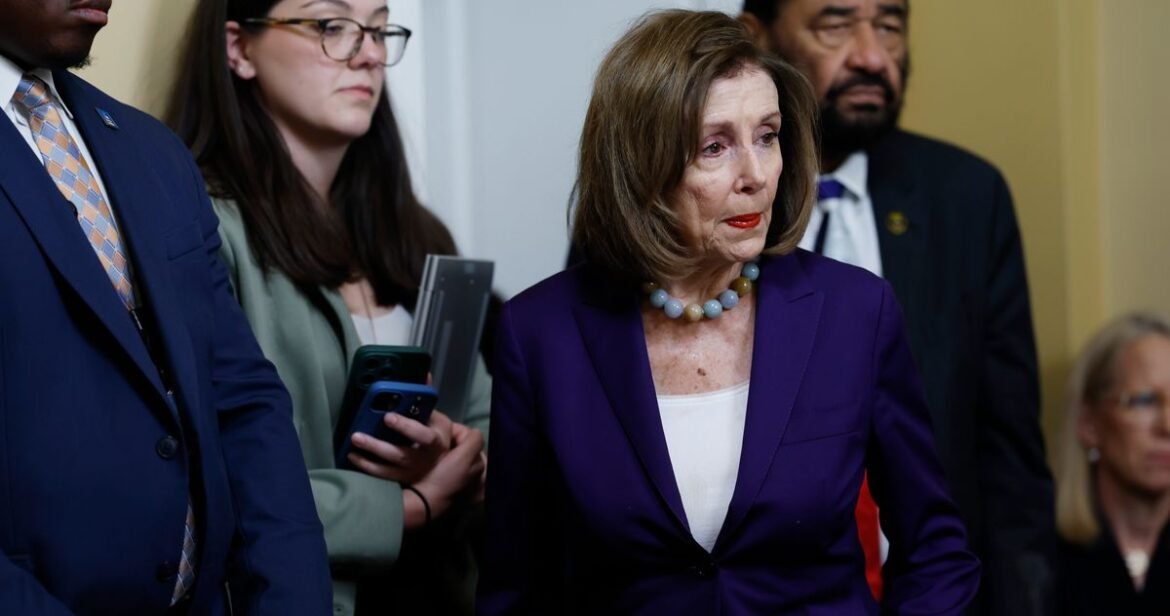
Nancy Pelosi joins the fray.
Photo: Anna Moneymaker/Getty Images
Once again, Donald Trump has figured out a way to break all the rules in ways that force Democrats either to emulate his bad behavior or lose ground to his lawless administration and his obedient Republican Party. He has instructed the apparently reluctant Texas governor Greg Abbott to use a special legislative session designed to approve relief from the state’s recent deadly floods into a partisan power grab.
Under a congressional-district mapping plan approved by the GOP legislature and signed by Abbott in 2021, Republicans currently hold 25 of 37 U.S. House seats — a pretty generous portion given recent statewide voting patterns. Under normal circumstances and ancient precedents, that map would stay in place until 2031, after the next census. Instead, Trump wants an unnecessary mid-decade redistricting with the goal of creating as many as five more GOP House seats in next year’s midterm elections, in which Republicans are in extreme danger of losing the House and with it the governing trifecta that made party-line legislation like the One Big Beautiful Act possible.
There’s not much Texas Democrats can do to stop this power grab (there was talk of leaving Austin and denying the GOP a quorum, but Republicans are holding flood relief hostage to prevent that). But Democrats elsewhere immediately talked about retaliating with partisan “gerrymanders” of their own between now and the midterms. They have a problem, though, in matching the GOP’s audacity, as the New York Times explained:
Though Democratic leaders have indicated a willingness to go tit for tat with Republicans, most of the largest blue states do not have a partisan redistricting process akin to the one in Texas, where the governor can simply call in the Legislature to redraw maps …
States where Democrats would have complete control over any redistricting, such as Illinois and Maryland, are already gerrymandered heavily in their favor. Squeezing more Democratic seats out of those states would be a challenge.
While Democrats have their share of aggressive gerrymanders, blue states have led in embracing reforms to insulate redistricting from politics, such as creating an independent or bipartisan commission to agree on new maps.
Such actions — done in the name of good governance and often with significant support from voters — are now leaving Democrats in a bind.
So countering the Texas power grab isn’t just a matter of being willing to play as dirty as the GOP. As Punchbowl News observed, there are structural problems: “For the most part, Republican governors just have to call their legislatures into special sessions and pass new maps. By comparison, Democrats have to change their state constitutions.”
Nowhere is that disadvantage more evident than in California, which is the only state with more House seats (52) than Texas’s 37, and where the nationally ambitious Democratic governor Gavin Newsom immediately started talking of retaliation against Texas the minute Abbott complied with Trump’s demands. California voters approved a ballot initiative back in 2008 creating a nonpartisan citizens commission to draw maps for state legislative districts and then voted to extend it to congressional districts in 2010. The commission is required to create the maximum number of competitive districts possible, which means that a good old-fashioned partisan gerrymander like the one underway in Texas could improve on the current Democratic advantage of 43 seats to the GOP’s nine (Democrats flipped three net seats in 2024). Indeed, some Democrats believe they could squeeze as many as six new seats out of California between a remapping and a good stiff anti–White House midterm breeze.
But it will be complicated and politically controversial, as the Los Angeles Times reports:
If California Democrats pursue partisan redistricting in time for next year’s midterm election, the Legislature, in which Democrats hold a supermajority, could place the matter on the ballot during a special election that probably would take place in November. State lawmakers also could opt to make the change through legislation, though that probably would be vulnerable to a legal challenge.
The latter path would involve arguing that the citizens commission only has the power to conduct the regular old decennial remapping process, leaving the legislature free to redo them in the interim. But that’s a shaky argument that would invite lawsuits, not just from Republicans but from good-government types deeply invested in California’s nonpartisan process. So retaliation against Texas would probably involve waging and winning a special election in November that would seek to tap the powerful anti-Trump sentiment in the state.
The good news for Newsom is that intra-Democratic heartburn about going in this direction seems to be melting away. The biggest and best sign of that yet was the announcement by former House Speaker Nancy Pelosi that she was game for this fight. Not only is she a residually powerful presence in California politics, but she’s also been associated in the past with efforts to restrict gerrymandering, co-chairing a committee with former attorney general Eric Holder. Now both Holder and Pelosi are ready for a fight, noted the L.A. Times:
“Because of our work, we now have the fairest national congressional map the country has seen in a generation, one that allows both parties to compete for the majority in the House,” Holder said Wednesday at a “Stop the Texas Takeover” virtual event hosted by the redistricting committee …
“This is shameless, shameless, the mid-decade redistricting that they’re doing at the orders of Donald Trump,” Pelosi said Wednesday at the “Stop the Texas Takeover” event. “And this is what we’re doing in California. We’re saying to the Texans, ‘You shouldn’t be going down this path. We go down this path, we’ll go down together.’”
The odds of Texas reconsidering its power grab are somewhere between little and none. So the fight is on, and the now-perpetual rivalry of the big-blue giant, California, and the big-red giant, Texas, will reach a new level.

